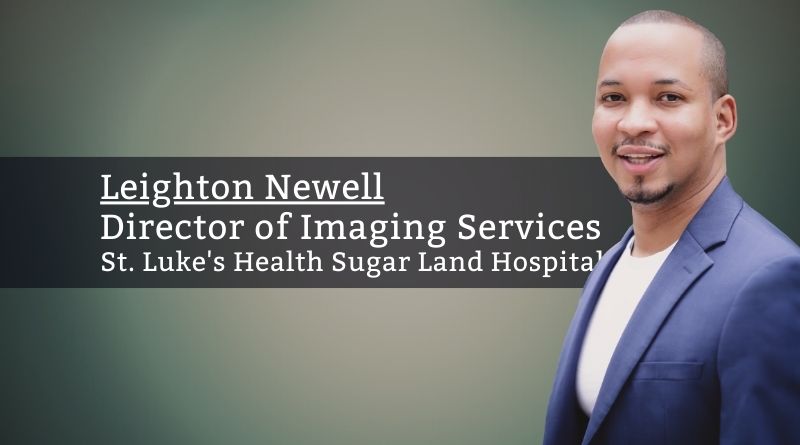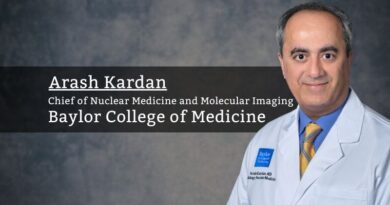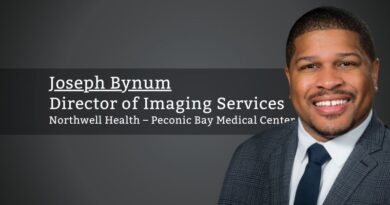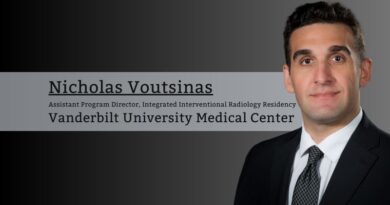Radiology during COVID-19 pandemic
By Leighton Newell, Director of Imaging Services, St. Luke’s Health Sugar Land Hospital
There is no doubt that medical imaging is the most frequently used diagnostic tool in medicine. Since it is being mostly utilized to get rapid results for both acute and chronic ailments, without the use of invasive measures, it should come as no surprise that imaging is the largest source of outpatient revenue for many hospitals, bringing in about 35% of the bottom line on average. Having such a high percentage and bearing such great responsibility and pressure in the scope of our healthcare institution, the understanding and management of that operation are faced with many challenges that require both careful and strategic planning in order to overcome these obstacles.
The introduction of COVID-19 hit our healthcare system in a way that no one could have predicted. As a radiology administrator, the biggest challenge that many of our institutions faced at that time was employee coverage, or rather employee shortages. It’s no secret that before blood tests, rapid tests and nasal swabs, the first ever created method for COVID-19 diagnosis was through a Chest CT, looking for that distinctive “ground glass” opacity appearance on patient images. During the initial onset, many patients came through the ER with uncertain diagnosis of what appeared to be flu and bronchitis symptoms. At the time, they were positive for COVID-19, but no one knew. We had no idea what we were dealing with or how to handle it. We obviously couldn’t turn patients away, so we had to arm ourselves and do what we signed up for when we chose this profession. Only this time, we were on the front lines fighting an enemy that we knew nothing about.
Radiological technologists are one of the many unsung heroes during the emergence of COVID-19. When isolation was at the precipice of our daily lives and many americans were at home or out of jobs, rad techs were working overtime hours at a rate that would be considered inhumane compared to current labor standards. After excessive hours and continuous exposure, rad techs were getting sick and were diagnosed with COVID-19. Available staff members were decreasing by the week. As a result, there were staff shortages. I can recall a time when staffing was so bad that I was being offered $10,000 per week to come to NY during their COVID-19 crisis. All expenses and accommodations were covered as long as I would agree to at least a four week contract. As good as that might sound, I still had work and family obligations to consider before respectfully declining the offer.
My advice to anyone starting and learning how to navigate this field would be to pick a modality that you love and then pursue a 2nd certification to help you become more marketable.
Dealing with a rising number in patient sickness’ and a growing concern for inadequate staff coverage, we turned to agency and contract staffing to help. Patient care needs were being met and we were able to ensure continuity of all radiology services for the foreseeable future. Even though this seemed like a great plan at the time, there were still a few setbacks. Agency staffing takes quite a bit of time to be approved, as they needed the appropriate clearance checks before being onboarded in our system and it comes at a high cost to the bottom line. I’m sure many administrators can relate to the exuberant costs that were being paid at the time. A large percentage of revenue was lost due to COVID-19, and then having to turn around and pay a high expense for additional staffing hurt our financials in a way that many outside the healthcare field will never understand. It was a balancing act that needed to ensure that our current staff members were being paid their full salaries, without the fear of losing their jobs or the reduction of hours, while simultaneously maintaining a reserve to ensure that additional staffing was a possibility when necessary. I’ll give you an example. If I needed an additional CT tech from an agency, I would have to endure the cost of paying about $200 per hour. What many technologists are not aware of is that a lot of these agencies will sign them up for a contract anywhere from 4 to 16 weeks and pay them at a rate between $60 to $80 per hour or more, which is significantly more than the normal Full-time or PRN rate and consume the rest of the money for their administrative and overhead cost. The trend that was happening during COVID-19 was that many radiological technologists were leaving behind their secure full-time jobs to hop on a bandwagon that seemed to pay out large sums of money. Yes, they would acquire a larger sum of money in a short period of time, but there were no benefits, long-term commitments or guarantees of sustainability.
Leaving a secure position for an agency is something I strongly advise against. No matter how promising it seems at the moment, I find that the current trend in agency or contract staffing requests are declining as we begin to create ways of normalizing our standard practices in a newly recognized COVID-19 world. I’ve noticed that many technologists that once left their secure roles are trying to find once again a home base to settle down in. The problem is, when they’ve knocked on those employment opportunity doors that were once widely opened, it is now closed. Those positions are now secured by those that chose to stay behind and remain in a secure full-time position.
My advice to anyone starting and learning how to navigate this field would be to pick a modality that you love and then pursue a 2nd certification to help you become more marketable. Nowadays, directors or hiring managers are looking for team members that can do multi-modality operations. If you have more than one trick up your sleeve, your chance of being hired grows tremendously. Lastly, find a place with a leader that respects and values your contribution to their team. This kind of place will ensure your happiness, give you a sense of purpose and nurture you in your career growth. A great working environment and a positive culture will always beat out a higher paycheck from an unsustainable source.



